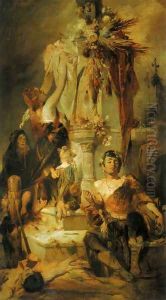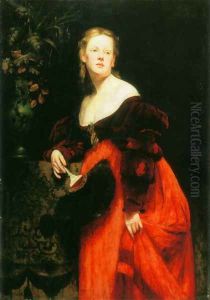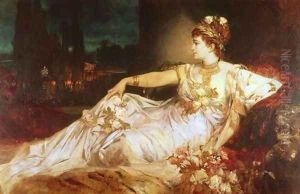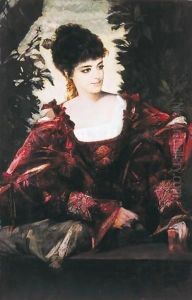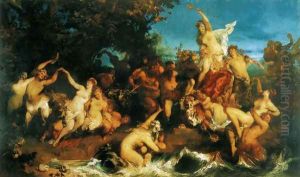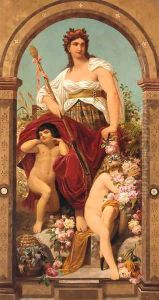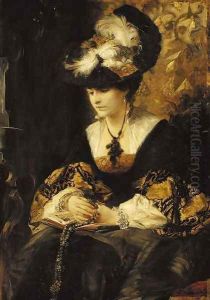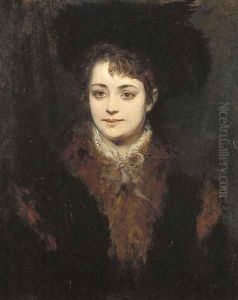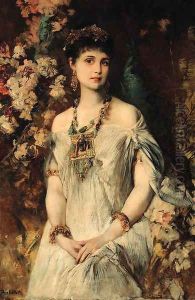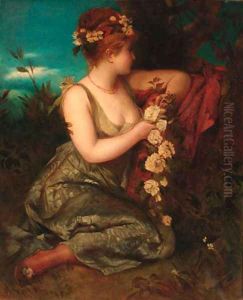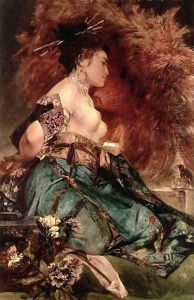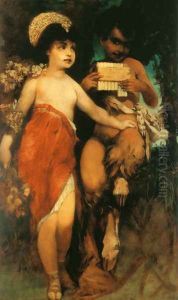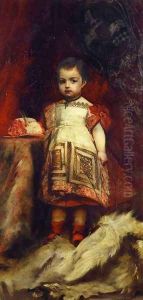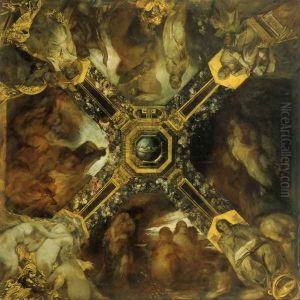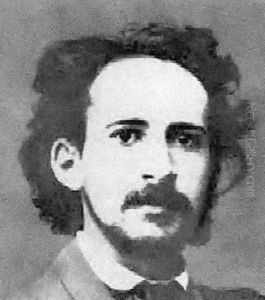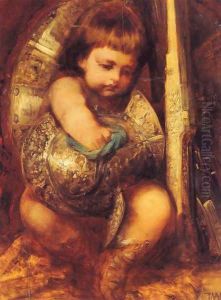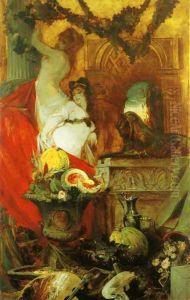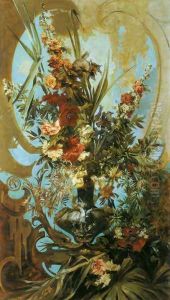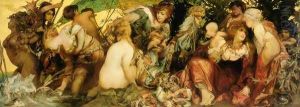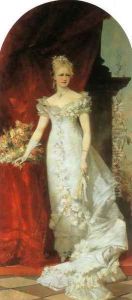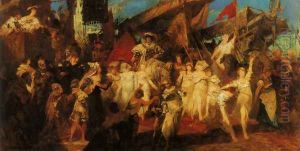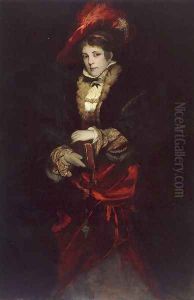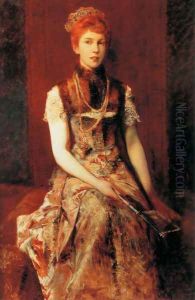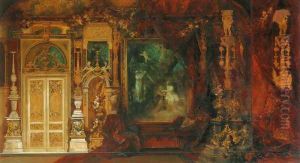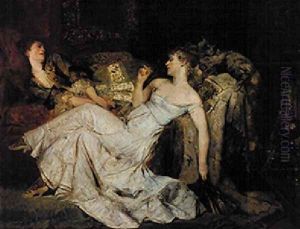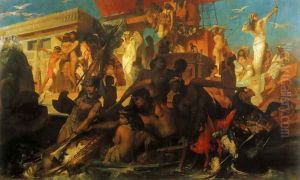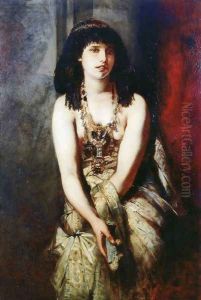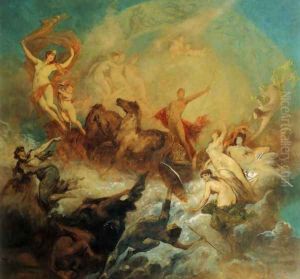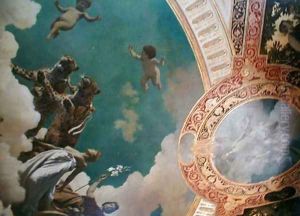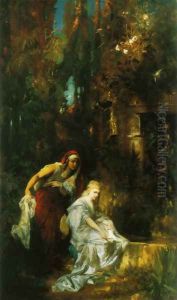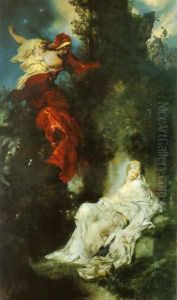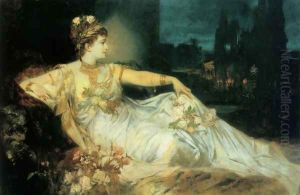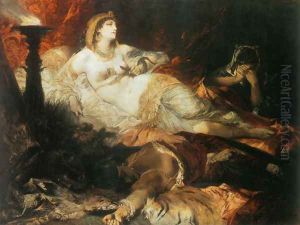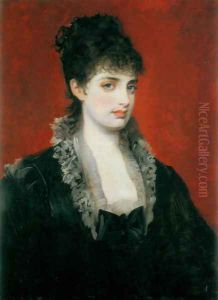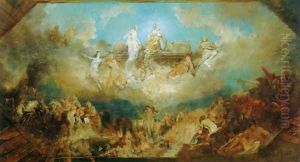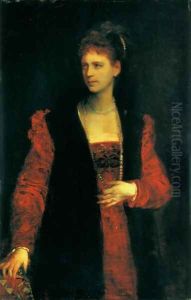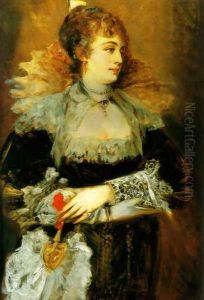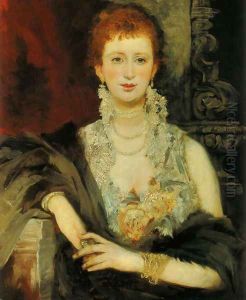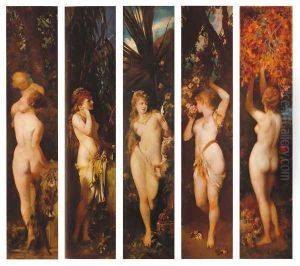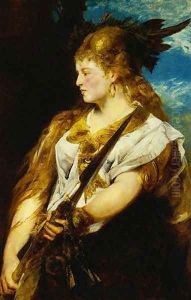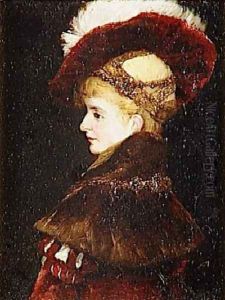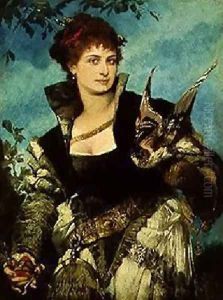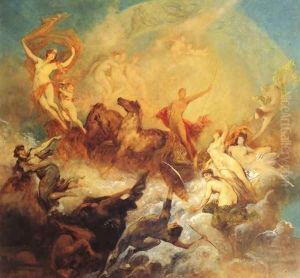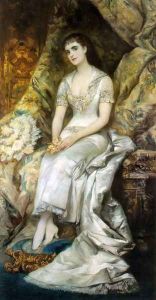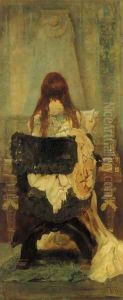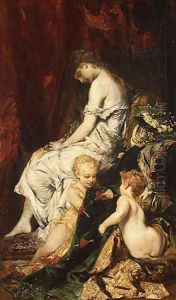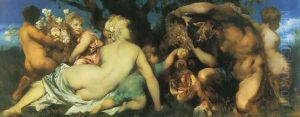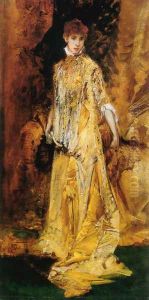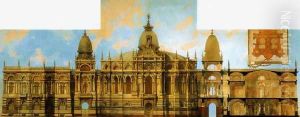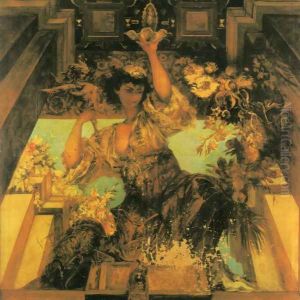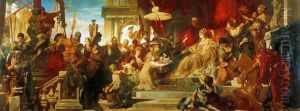Hans Makart Paintings
Hans Makart was an Austrian academic history painter, designer, and decorator, considered one of the most important artists of the Vienna Ringstraße period in the late 19th century. He was born on May 28, 1840, in Salzburg, Austria, to a family of a chamberlain at the Mirabell Palace. He showed an early interest in art, which led him to study at the Vienna Academy of Fine Arts. Under the tutelage of Johann Fischbach, Makart honed his artistic skills and later went to Munich to study under Karl Theodor von Piloty, a leading German historical painter of the time.
Makart's style was characterized by a mixture of Neoclassicism and Romanticism, and he was particularly known for his opulent historical scenes that often depicted moments of grandeur and sensuality. His use of rich colors and lavish ornamentation made his work very popular among the Viennese aristocracy. He became a central figure in the cultural life of Vienna and was often referred to as the 'Magician of Color'.
One of his most famous works is 'The Entry of Charles V into Antwerp', which showcased his talent for creating grand historical narratives filled with dynamic figures and elaborate detail. His other significant works include 'The Plague in Florence', 'Abundantia: The Gifts of the Earth', and 'Cleopatra's Entry into Tarsus'.
In addition to painting, Makart was also influential in the field of interior design and decorative arts. He was commissioned to create designs for numerous interiors, and his aesthetic played a significant role in shaping the artistic tastes of his time. His influence extended to the Makartstil, or Makart style, which became synonymous with the lavish, aesthetic movement of his era and was also a precursor to Art Nouveau.
Despite his success, Makart's life was marred by personal turmoil and a constant struggle with illness. His health began to decline in the early 1880s, and he died on October 3, 1884, in Vienna at the age of 44. His death was widely mourned in artistic circles, and his legacy continued to influence Austrian art and culture. Today, Makart is remembered as a key figure of the Austro-Hungarian art world, and his works are held in high esteem, with many housed in prominent museums and galleries around the world.
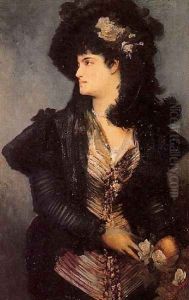

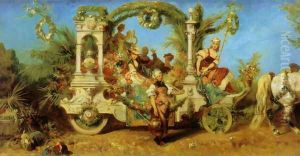

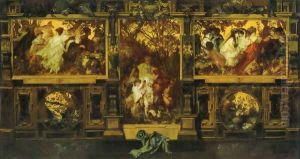
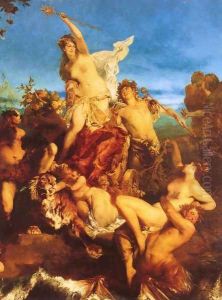

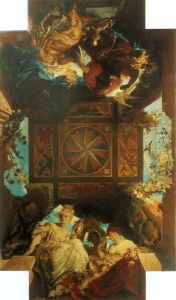
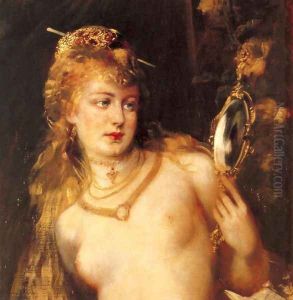

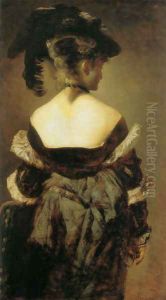
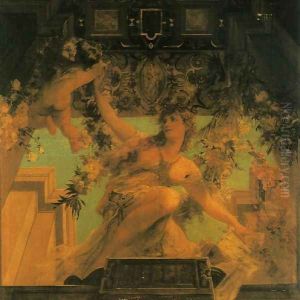
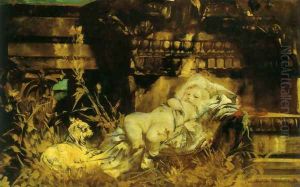
![Gotische Grabkirche St Michael Seitenansicht [Gothic Cemetary St Michaels Side View]](https://www.niceartgallery.com/imgs/223113/s/hans-makart-gotische-grabkirche-st-michael-seitenansicht-gothic-cemetary-st-michaels-side-view-ecbb6390.jpg)
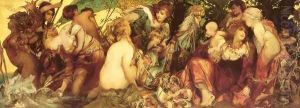
![Gotische Grabkirche St Michael Turmfassade [Gothic Cemetary St Michaels Front Tower]](https://www.niceartgallery.com/imgs/223111/s/hans-makart-gotische-grabkirche-st-michael-turmfassade-gothic-cemetary-st-michaels-front-tower-980f6561.jpg)
